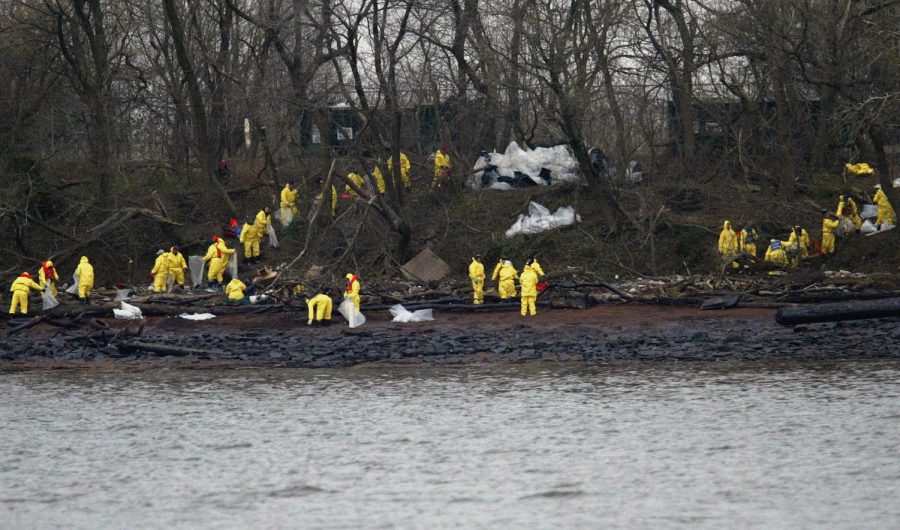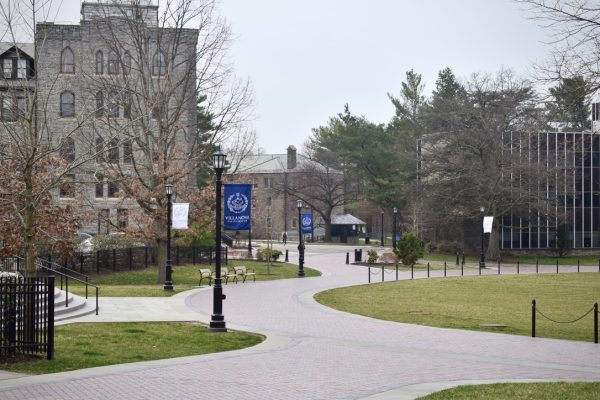Delaware River Spill Response Lacked Transparency
Workers are pictured cleaning up after Friday’s chemical spill into Otter Creek.
March 29, 2023
When rumors are flying, uncertainty is pervasive and panic sets in, to whom can we turn for accurate information and instruction? Ideally, governmental and institutional leaders would step up with transparency to set the record straight and advise about the best course of action for the situation at hand.
Unfortunately, this was not the case after the chemical spill from Trinseo Altuglas facility of around 8,000 gallons of water-soluble plastic material into Otter Creek, a Delaware River tributary, this past weekend. Officials soon became concerned that Northeast Philadelphia’s Baxter Water Treatment Plant had been contaminated as a result of the spill.
A situation like this, with the capacity to impact a population of nearly six million in the greater Philadelphia area through its water source, should have been addressed with efficient and thorough communication from city and state leaders. Instead, citizens were originally left in the dark and, once informed, not given proper guidance.
The spill itself took place on Friday night, but the city did not make the public aware of any potential threat to the water supply of the city or surrounding counties until Sunday.
The alert came in the form of an unclear warning, in which the city said that citizens may want to use bottled water instead of tap water following the spill, and included a map of areas potentially affected.
Naturally, this advisory was met with a run on bottled water. Panic-buying caused by the vague notice cleared countless stores of their bottled water as people feared for the worst.
To make matters worse, Philadelphia Mayor Jim Kenney was seemingly nowhere to be found. At a time when the city was in need of direction and clear leadership, Kenney failed to fulfill his mayoral role.
Later on Sunday, the city followed up on its previous announcement, affirming that contamination was not, at that time, detected in the city’s water. Tap water was cleared as safe to drink up until Monday at 11:59 p.m., while the plant’s water would continue to be tested to determine the possibility of any lasting contamination.
However, city officials’ lack of timely information and clear instruction regarding the nature of the water contamination marked a buying frenzy that extended far beyond the city of Philadelphia, as people miles away experienced similar bouts of panic, Villanova students included.
Junior Kayla Verga spent most of her Sunday driving around trying to find bottled water.
“It was really nerve-racking to learn in a day that our water may be undrinkable,” Verga said. “The fact that government officials were so unclear on whether we could actually drink tap water or not made it worse. Suddenly, I was trying to find water at multiple different stores and there was none available.”
This panic is understandable, especially considering the East Palestine, Ohio train derailment earlier this year, a toxic spill that caused a chemical fire and harmful fumes to be released into the atmosphere. One toxin, butyl acrylate, was actually present in both the train derailment and this weekend’s spill into Otter Creek, according to the The Philadelphia Inquirer.
Considering these events, there is a clear problem in the regulation of and response to chemical mishaps. Public outcry has been strong.
“Why is it so hard to keep toxic chemicals inside their means of transportation?” junior Isabella Coles said. “And why is can’t we get clear communication when this happens?”
Clearly, with such a timely and sensitive issue as this, those in office need to make greater efforts to inform the public.
In some respect, the same can be said of Villanova. In the most recent Wildcat Newswire, Villanova included a link to Delaware County’s Emergency Services’ statement regarding drinking water. However, access to this statement was inconspicuously incorporated in the middle of the Newswire, under “Other News,” in small blue font.
Given the stress felt by students and the community at large, the University could have done more to inform the student body on whether they should be concerned with the effects of this chemical spill.
Villanova’s Dr. Stephanie Katz Linkmeyer, who teaches a course about the chemistry of water and has a deep understanding of the subject at hand, provided reassurance that Villanova does not source its water supply from the Delaware River and that students have no reason to be concerned. With respect to the city of Philadelphia, Linkmeyer argued that city officials acted in best practice to address the situation.
“The city of Philadelphia correctly provided their residents notice about the spill out of an abundance of caution,” Linkmeyer said.
She also explained the typical process that occurs when a spill like this takes place.
“When a chemical spill occurs in a river, the water company will shut off its intake from that river temporarily,” Linkmeyer said. “The Delaware isn’t the only river that supplies Philadelphia with its water. Since the water in the river keeps flowing, the intensity of the chemical will dissipate quickly. Thus, the danger is only for a short period of time. If some of the chemical does get through, attempts will be made to filter it out at the water treatment plant. But the plant can’t test for that specific chemical (as it’s not a typical contaminant), so customers are told to avoid their water for a brief time.”
This information provided by Linkmeyer is helpful to clarify what exactly happened and how the public should respond. Such guidance was necessary from the city when uncertainty was running rampant.
In times of panic, we look to those in charge for support. When we don’t receive it, a frenzy ensues, as we saw this weekend. Hopefully, local authorities will be more transparent and timely about this kind of situation in the future.










